The unfortunate case of the Tudor estate that was bombed, torn apart for firewood and then buried underneath a golf course
Few houses have suffered a fate as protracted and violent as Belhus in Essex.
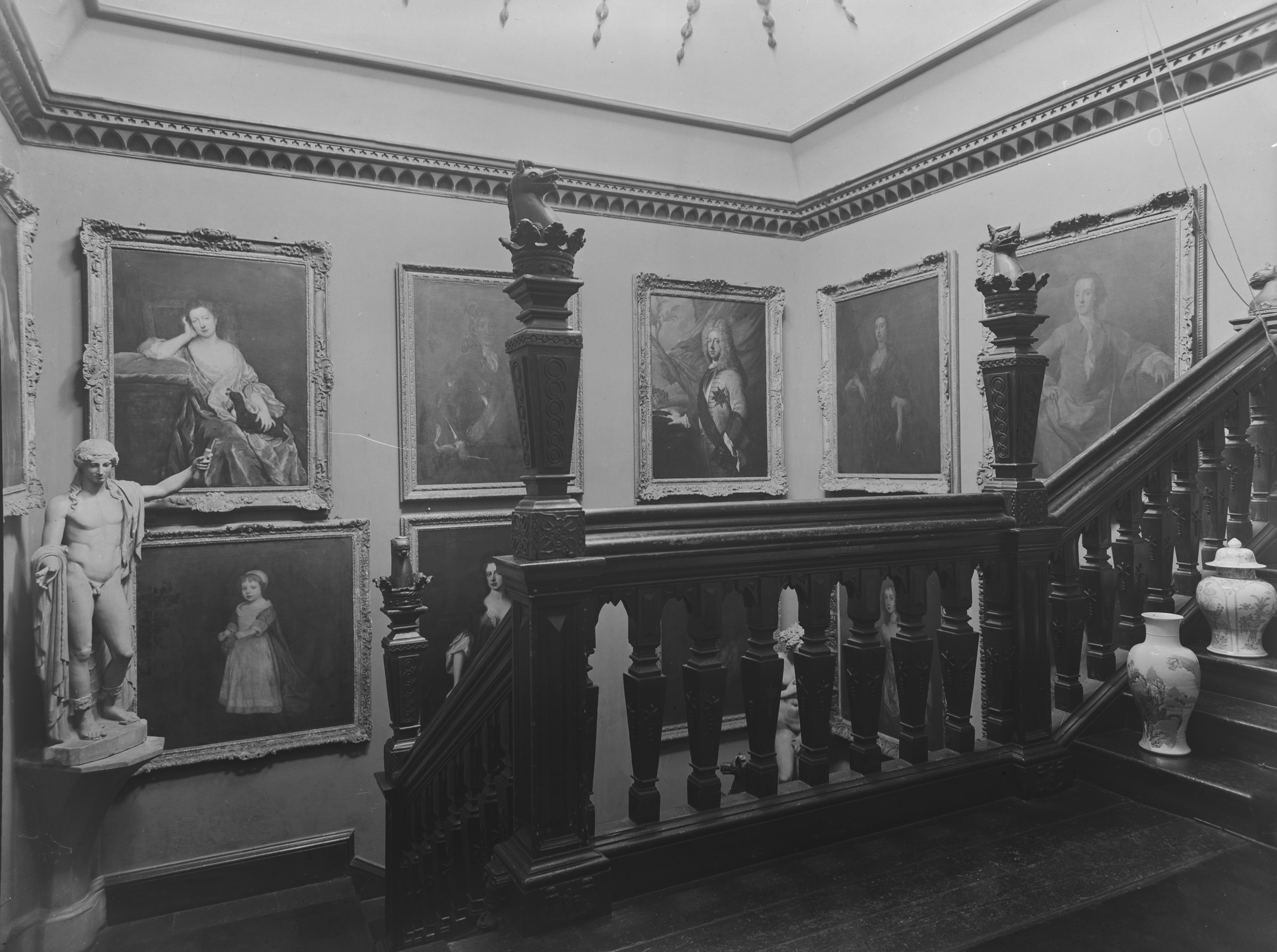

Belhus — a Tudor mansion whose north side had been ‘very little altered’ since the reign of Henry VIII — was one of many country house victims of the Second World War. This time in the form of bomb damage and use for firewood.
Belhus sat quietly in the landscape and under the stewardship of the same family until 1919, when it was inherited by the 66-year-old Sir Thomas Barrett-Lennard. Being a gentleman of mature years, Sir Thomas already had his own estates and so, in 1922, it was quietly sold to an investment company.
The following year, the jaw-dropping contents were marketed for sale over eight days, with the Essex Chronicle noting that ‘private Americans are bidding greatly’. Furniture by Chippendale, and portraits by Van Dyck and Sir Peter Lely were sold alongside Chinese porcelain, realising a sum of more than £21,000 for Sir Thomas (more than £1 million in 2025 money). Sadly he not have long to enjoy or employ his riches — as he passed away just four months later.
Members of Sir Thomas’s extended family lived in the property until it, too, was requisitioned at the outbreak of the Second World War.
By the end of the conflict, Belhus had been mortally wounded, not only by German bombs, but also by oak panels and floorboards being repurposed as firewood.
The family never returned and, despite numerous attempts to reimagine the grand old house, the demolition team arrived in early 1957.
Belhus’ footprint and gardens lie beneath a golf course, close to the Mar Dyke Interchange connecting the M25 to the A13.
Exquisite houses, the beauty of Nature, and how to get the most from your life, straight to your inbox.
Years before this sorry tale, Country Life published a two-part feature on the estate (May 1920). The pictures that follow illustrated it and are shown with the original captions.
The Lord Dacre mentioned in the captions is the 17th Lord Dacre whose 'lively interest in genealogy and heraldry was probably the origin of the Gothic infection, which he was among the first to contract, for he had begun the transformation of Belhus in 1745.'
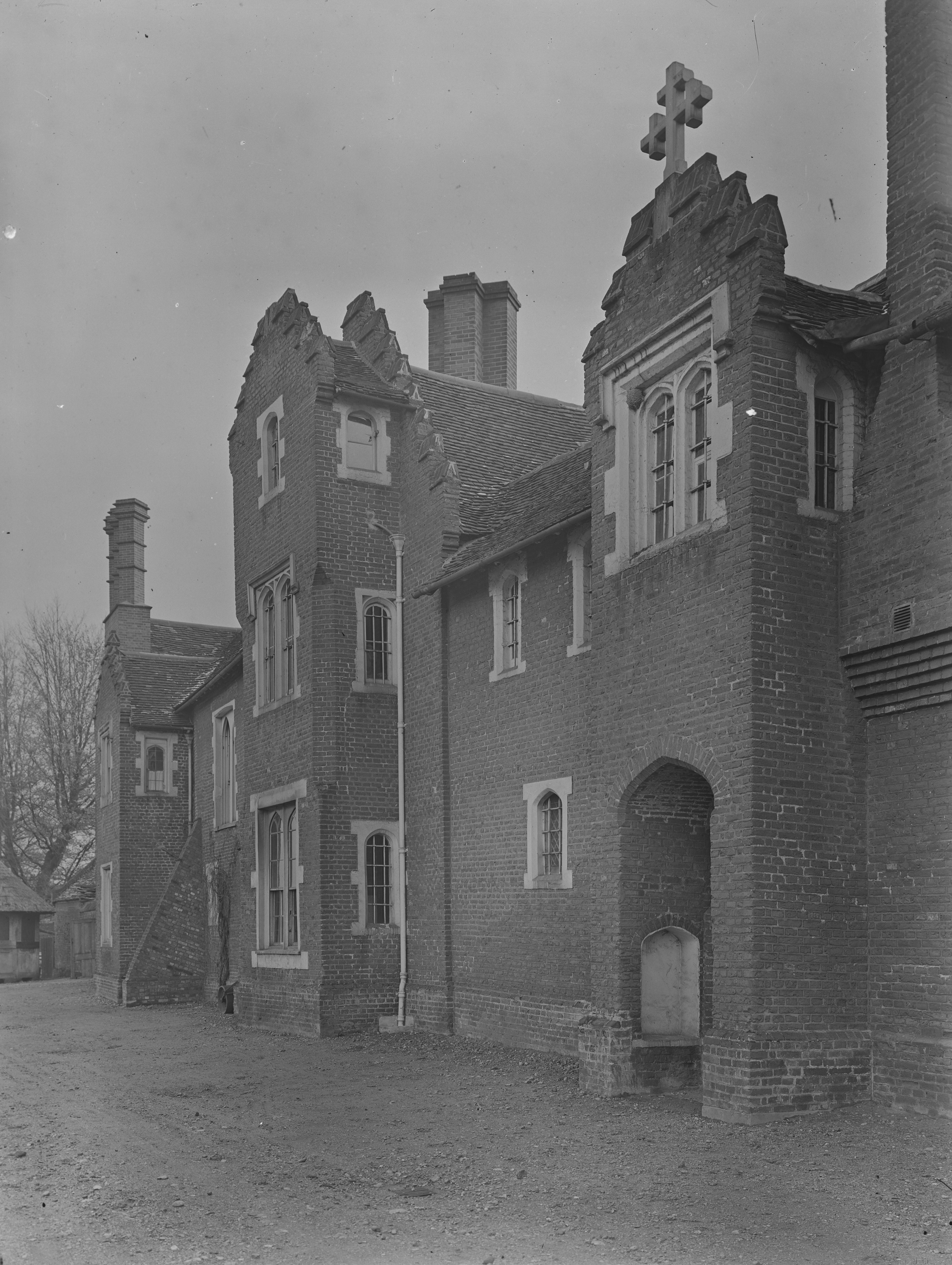
THE NORTH SIDE: This has been very little altered since it was built in Henry VIII's time. The rough, many hued bricks and the crow-stepped gables are typical of Eastern Counties building in that age.
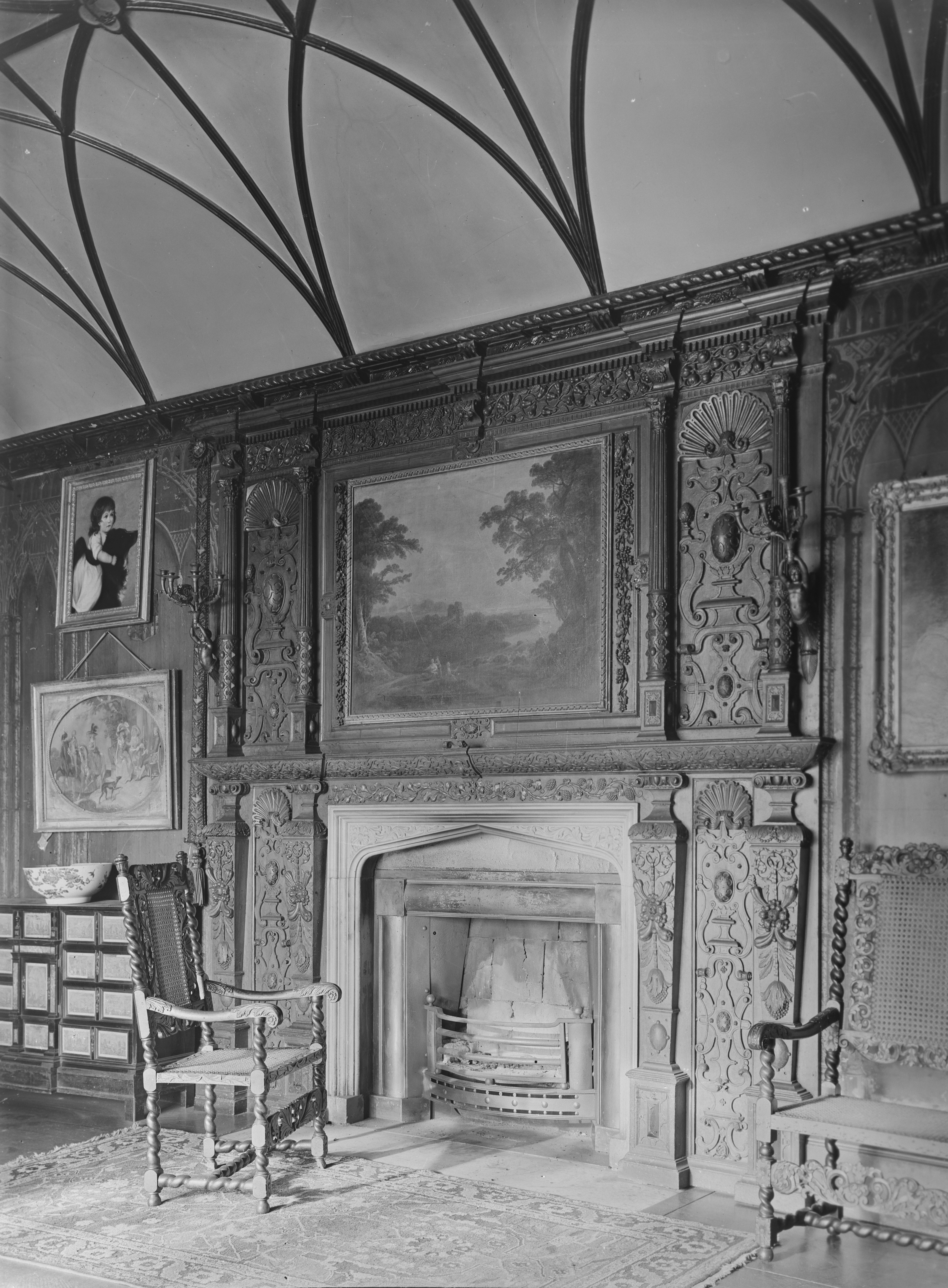
IN THE NORTH OR TAPESTRY ROOM: The marble chimneypiece, called by Horace Walpole a 'miscarriage into total Ionic', was the one classical introduction which the Gothic-minded Lord Dacre allowed.
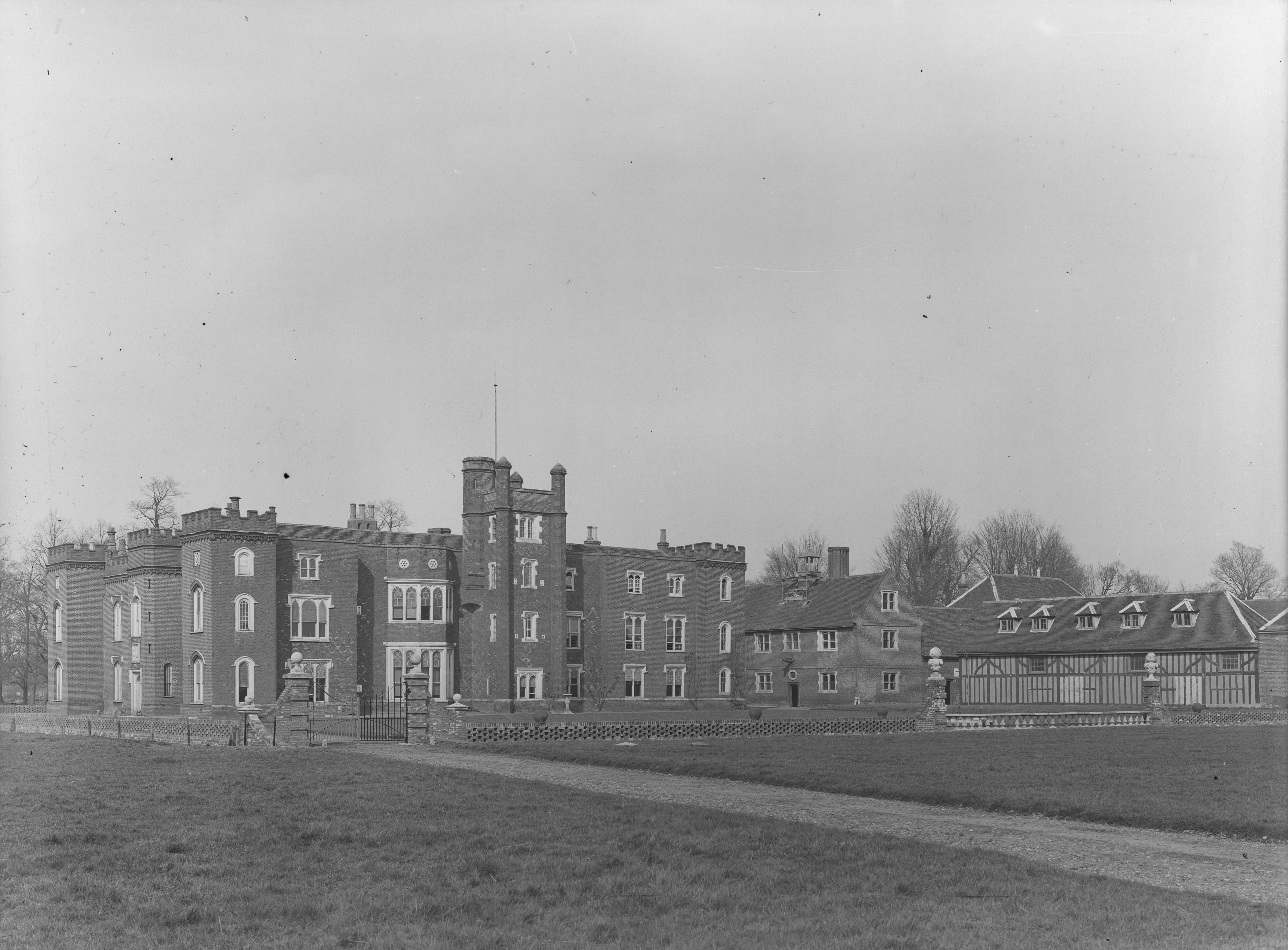
BELHUS TO-DAY, FROM THE SOUTH-WEST: Lord Dacre swept away the walled forecourt garden, remodelled the west side — making his front door there — and added the part of the south from lying east of the tower.
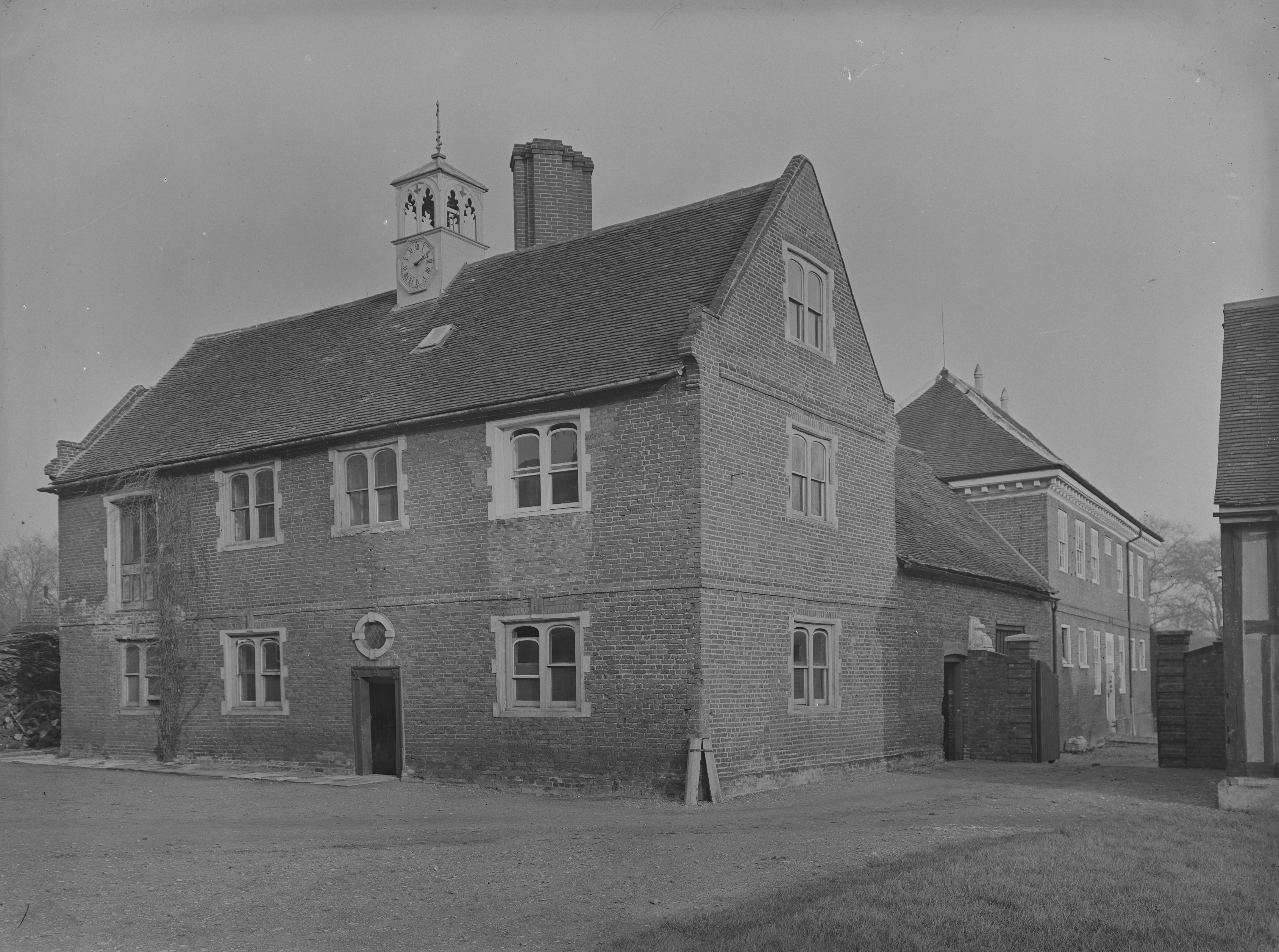
OUTBUILDINGS BOTH EARLY TUDOR AND LATE STUART.
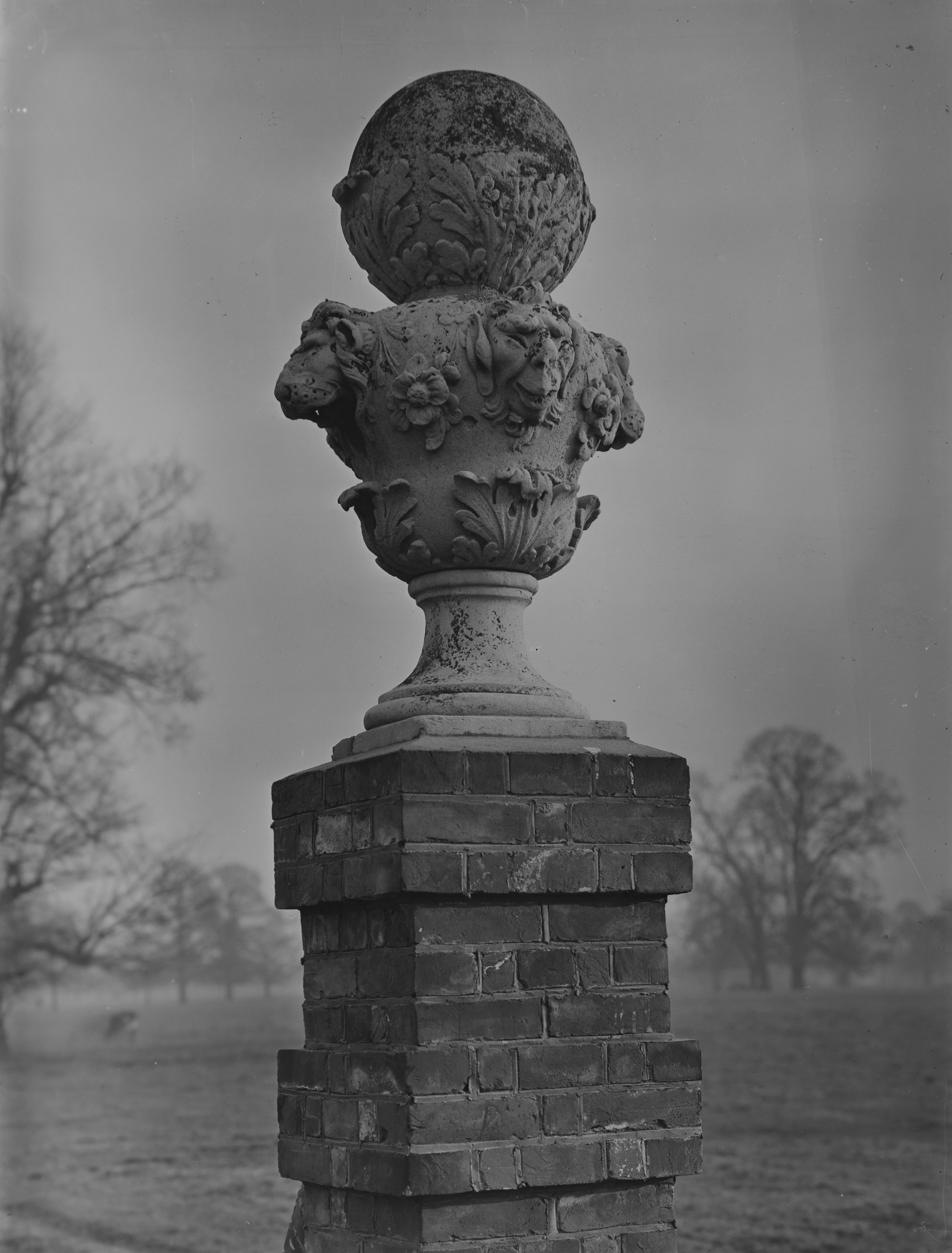
ONE OF THE SCULPTURED STONE FINIALS FROM DACRE BARRETT'S PIERS.
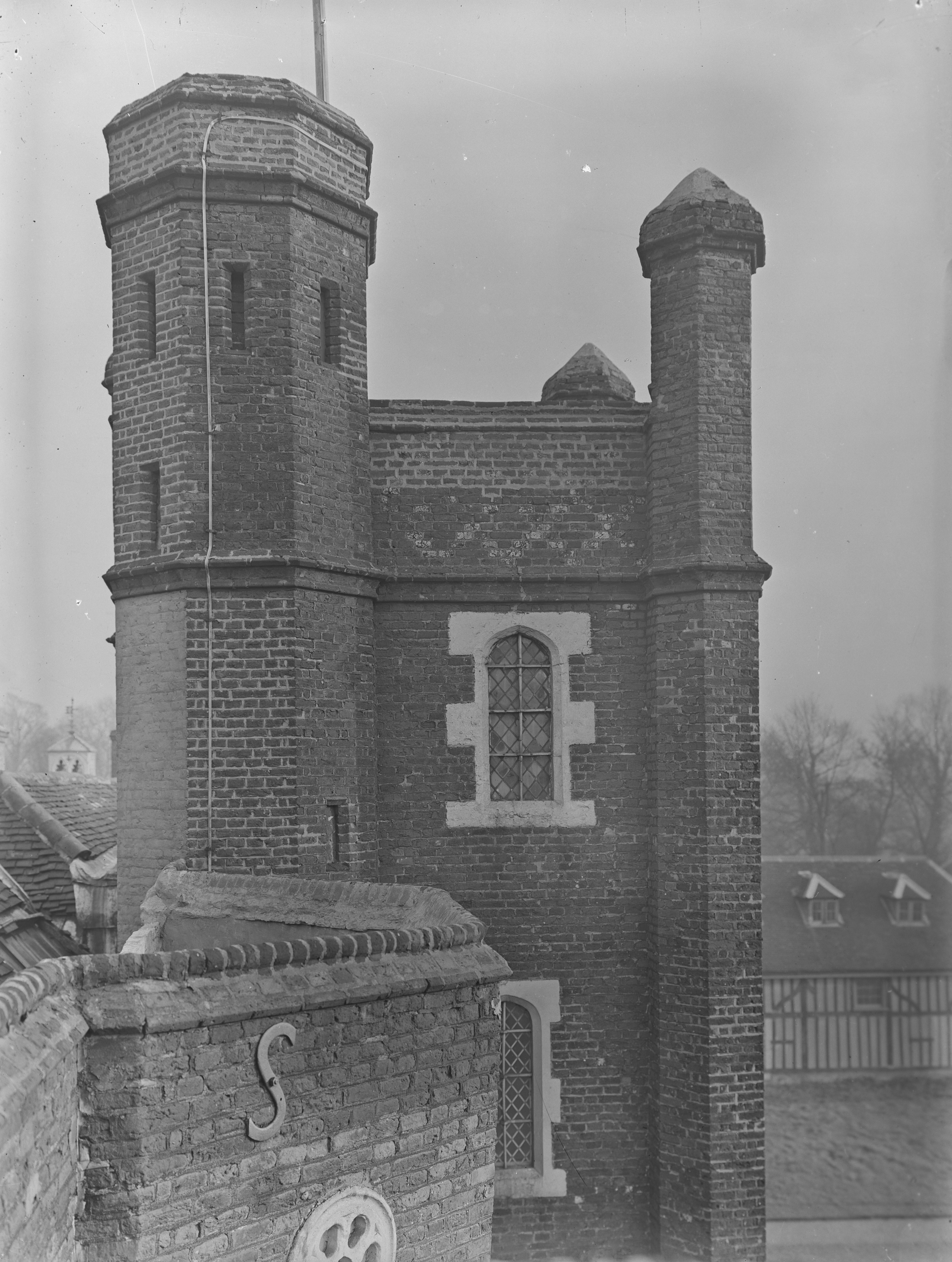
THE TOP OF THE TOWER FROM THE ROOF: Except for some new pointing the Henry VIII brickwork is untouched.
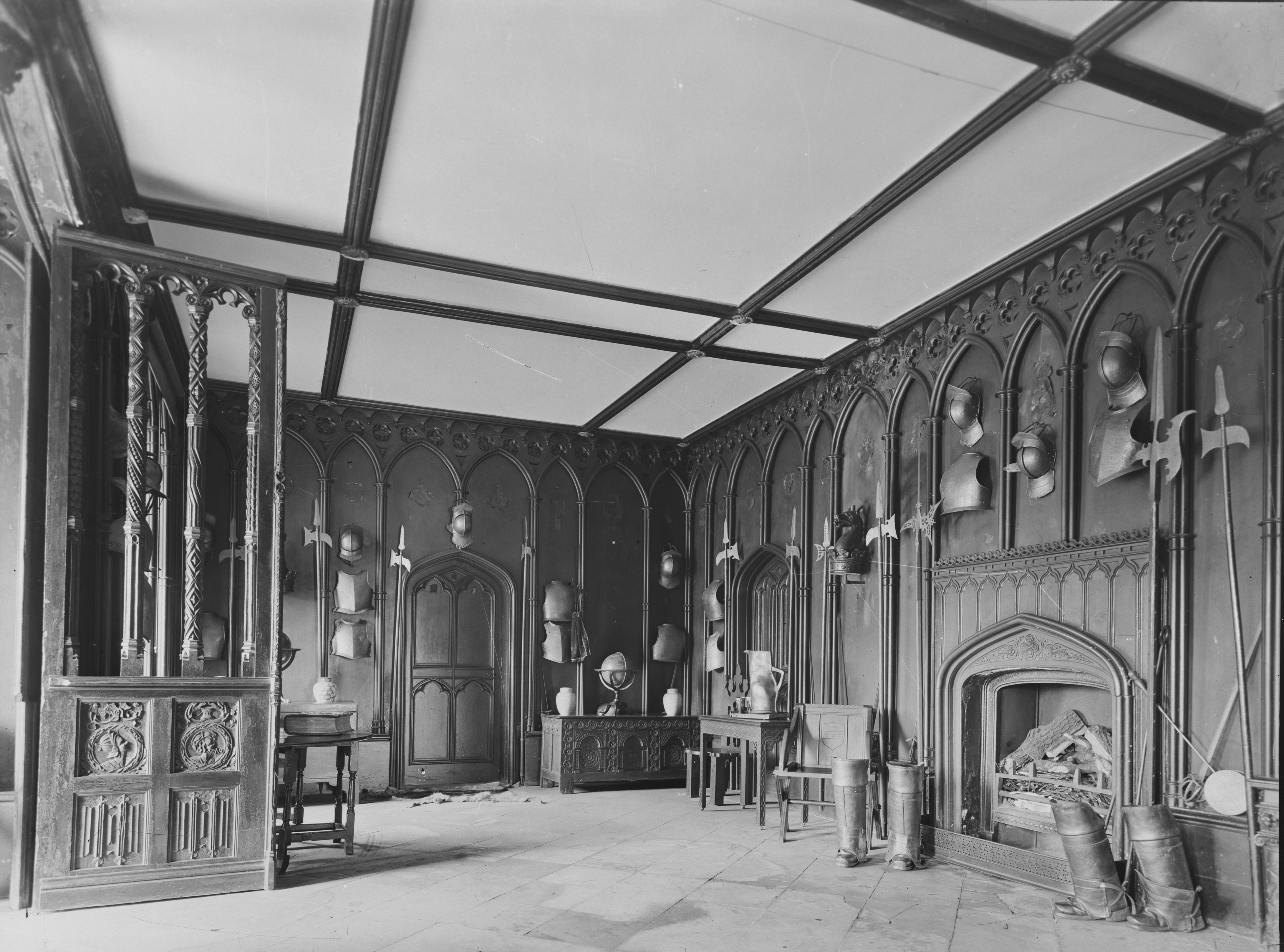
LORD DACRE'S HALL IN 1745 — GOTHIC: It occupies the centre of the west side. The door at the end leads into the north room.
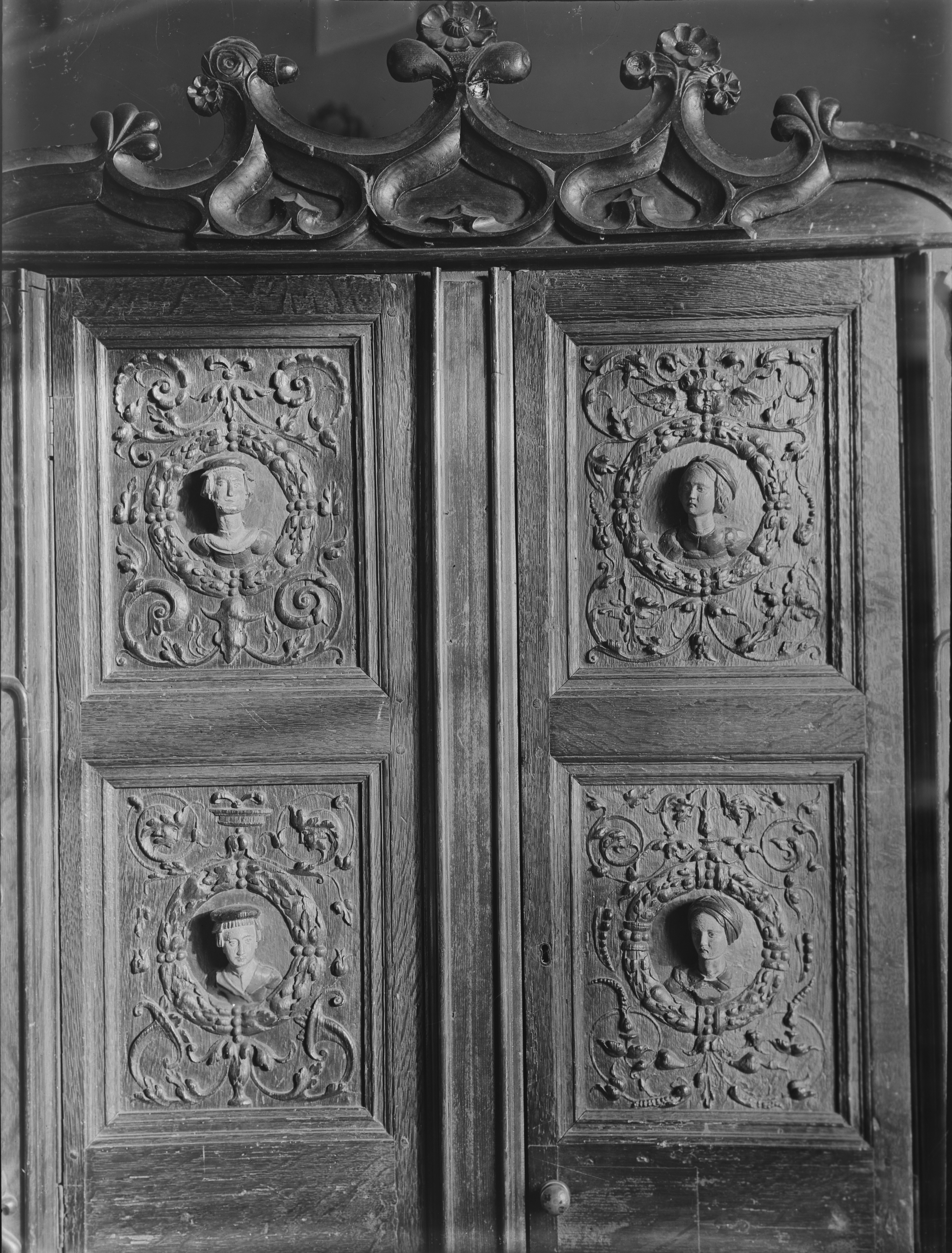
CARVED PANELS OF HENRY VIII PERIOD, BUT OF FLEMISH WORKMANSHIP.
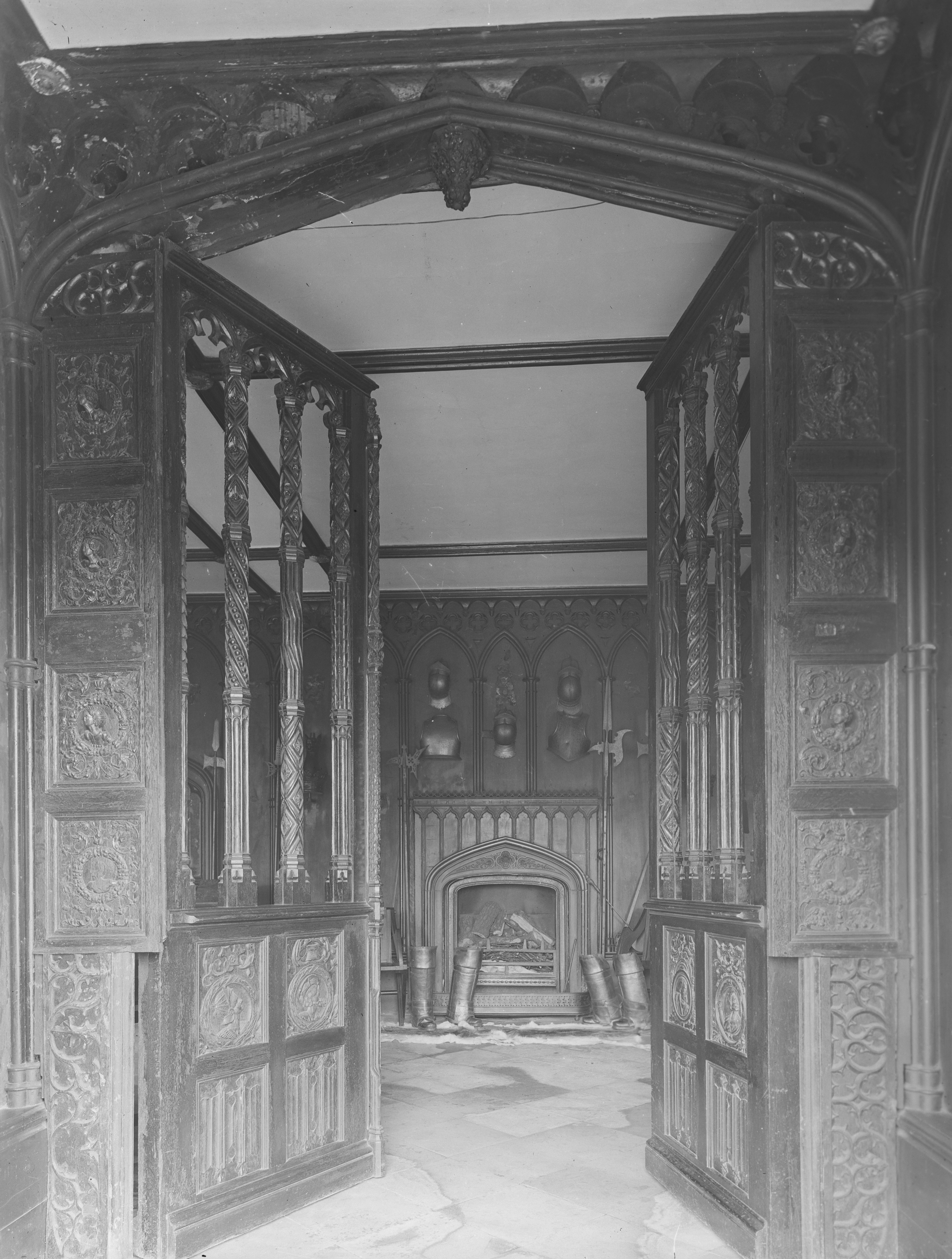
FLEMISH EARLY RENAISSANCE WOODWORK AT THE FRONT DOOR.
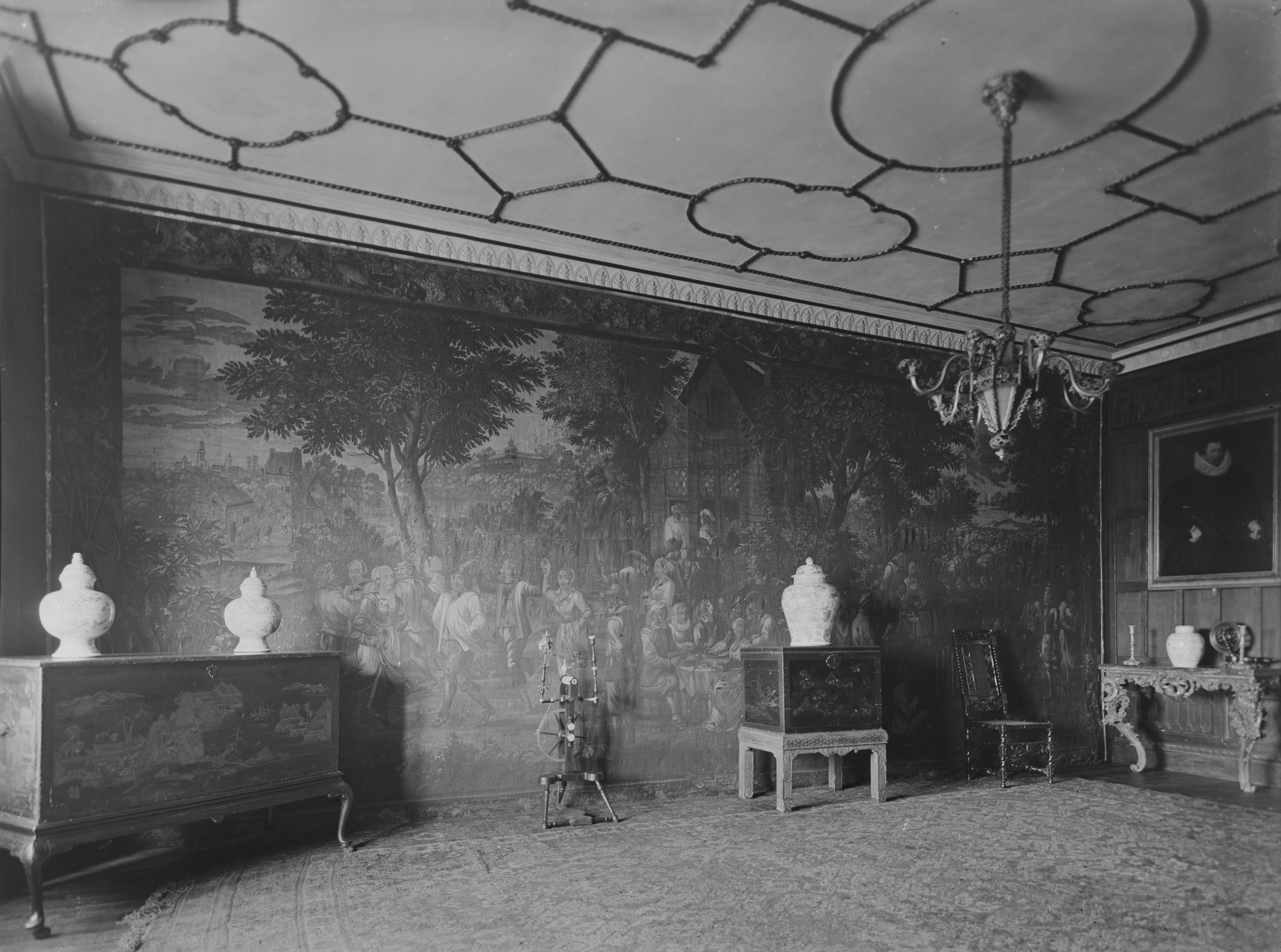
FLEMISH TAPESTRY AND LACQUER FURNITURE IN THE NORTH ROOM.

THE STAIRCASE: Built by Lord Dacre about 1745 in imitation of the Jacobean style. Many of the family pictures which he collected hang on the walls.

IN THE UPSTAIRS DRAWING-ROOM, ABOVE THE DINING-ROOM.
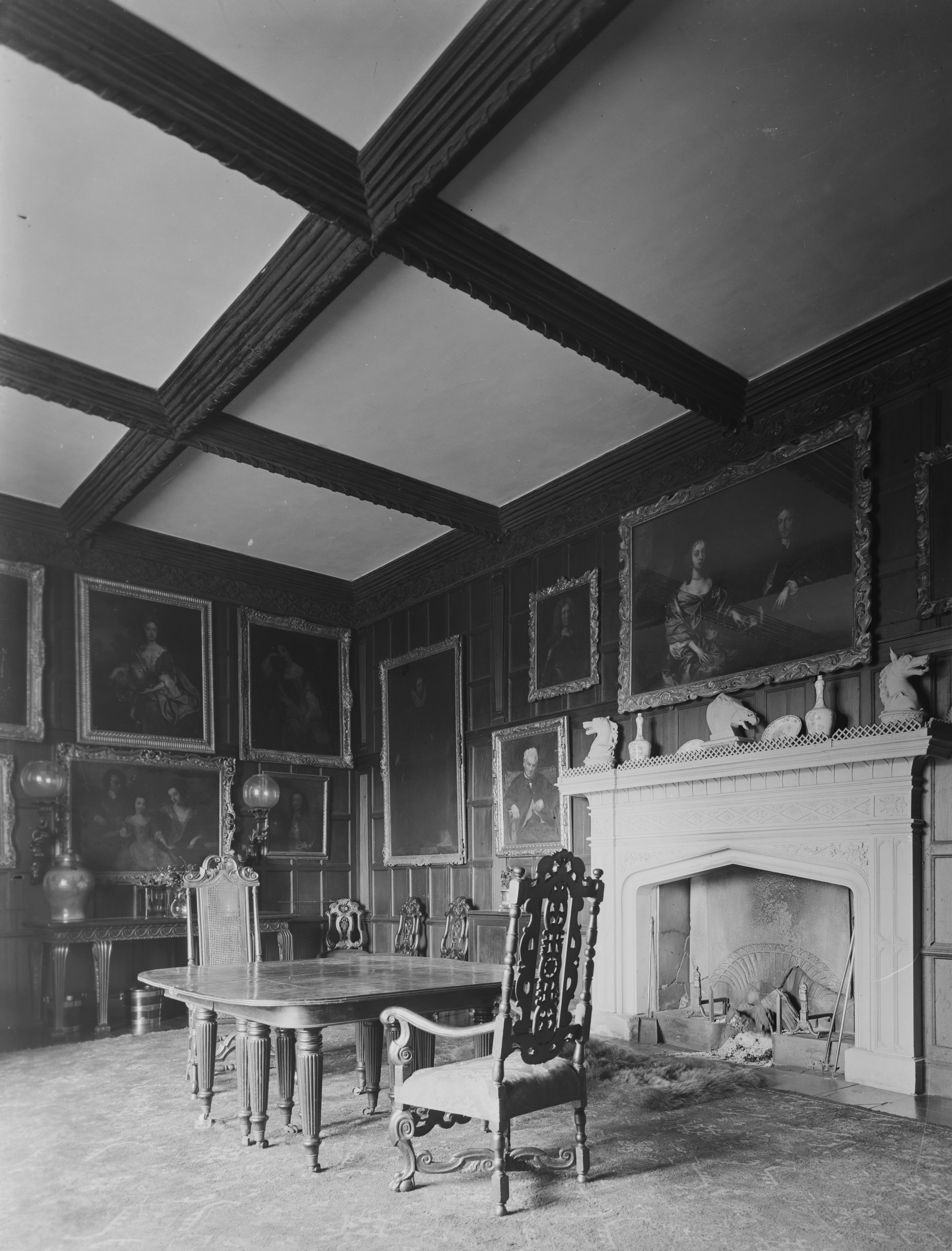
LORD DACRE'S 'EATING ROOM': It is the original hall to the left of the old entrance tower. The bay window was moved to the centre of the room.
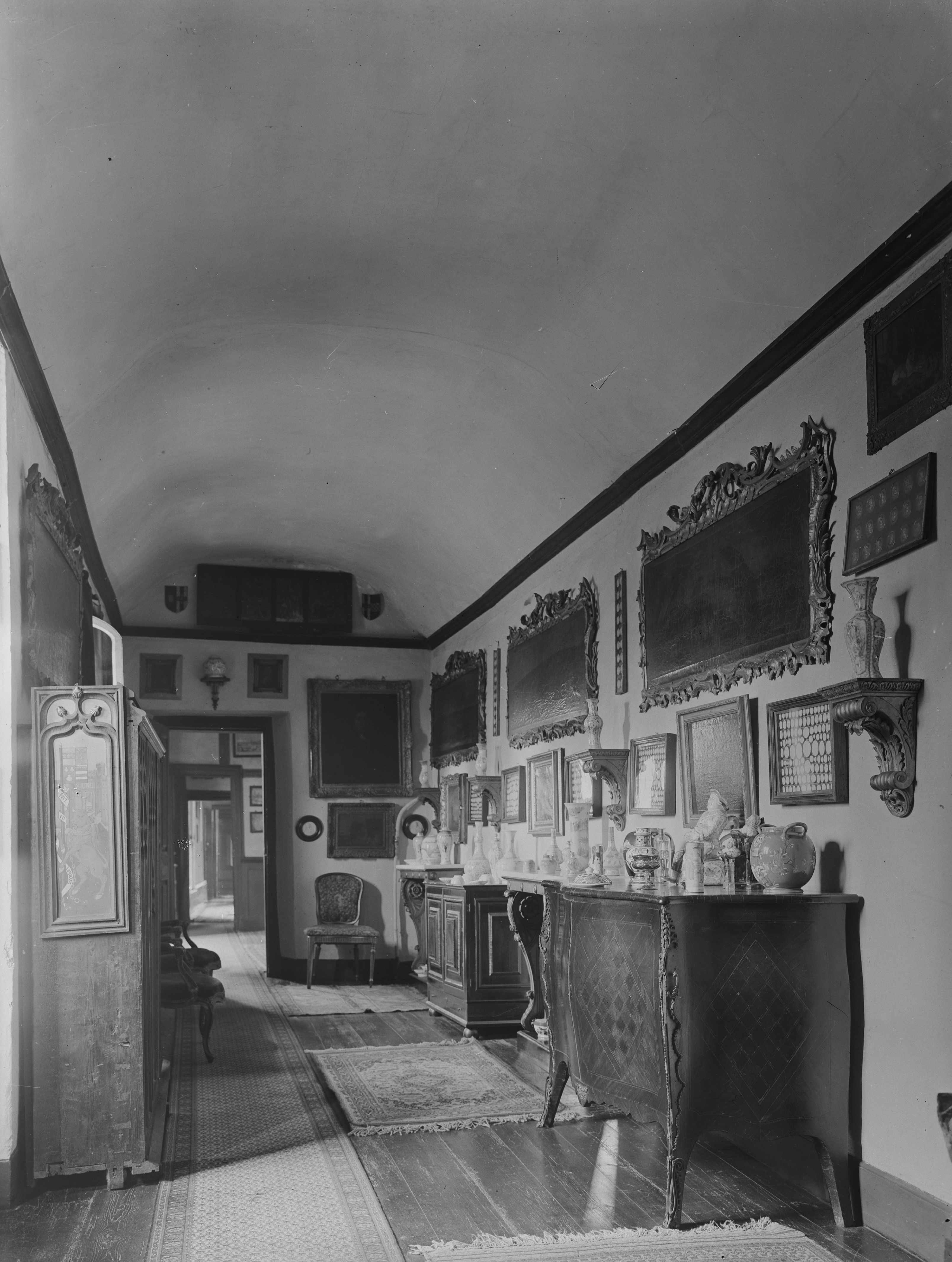
AN UPSTAIRS CORRIDOR: The six finely carved frames contain views of Naples, no doubt acquired by Lord Dacre when in Italy in 1750.
The Country Life Image Archive contains more than 150,000 images documenting British culture and heritage, from 1897 to the present day. An additional 50,000 assets from the historic archive are scheduled to be added this year — with completion expected in Summer 2025. To search and purchase images directly from the Image Archive, please register here
Melanie is a freelance picture editor and writer, and the former Archive Manager at Country Life magazine. She has worked for national and international publications and publishers all her life, covering news, politics, sport, features and everything in between, making her a force to be reckoned with at pub quizzes. She lives and works in rural Ryedale, North Yorkshire, where she enjoys nothing better than tootling around God’s Own County on her bicycle, and possibly, maybe, visiting one or two of the area’s numerous fine cafes and hostelries en route.
-
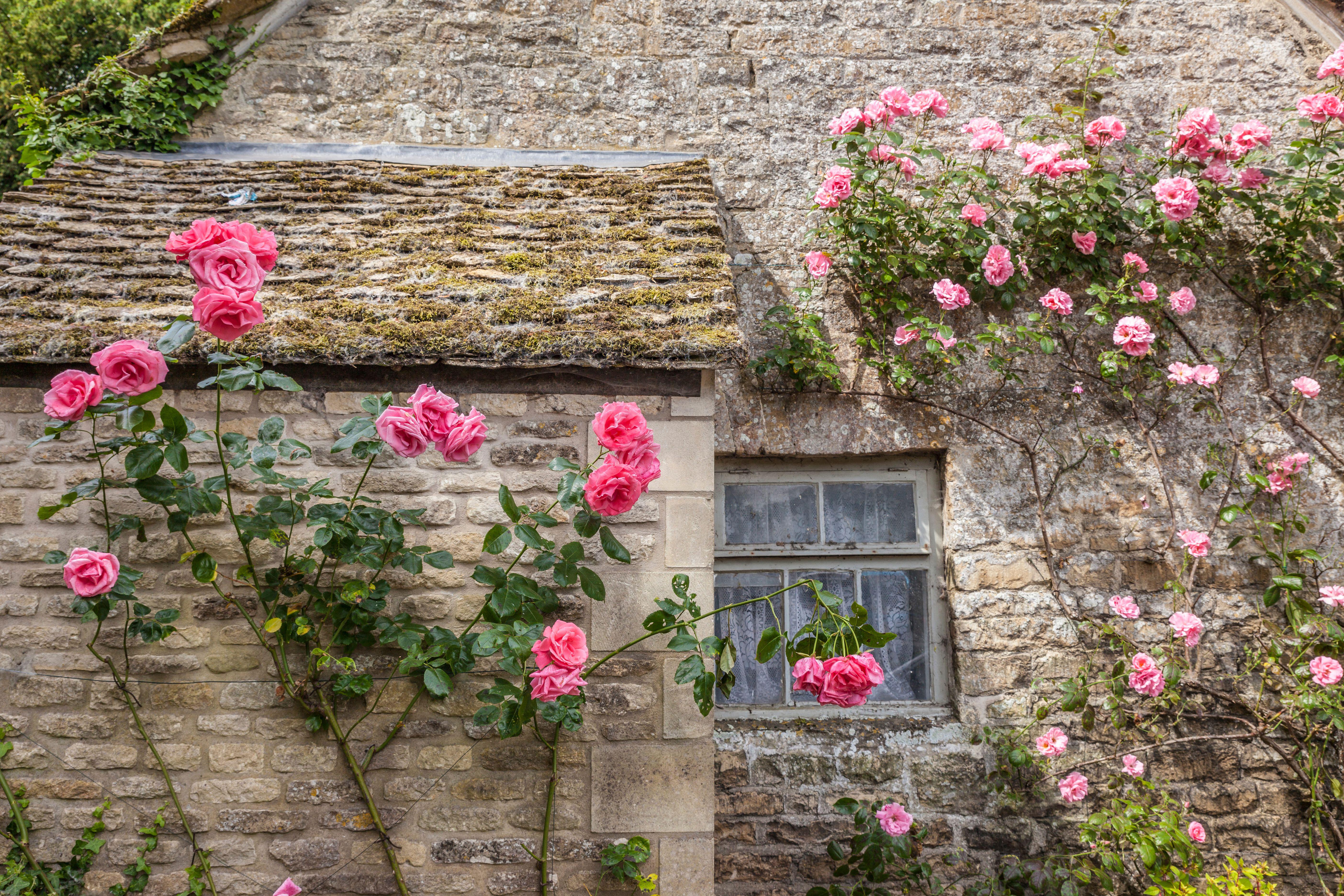 Bare roots: How to find the perfect rose and how to plant it
Bare roots: How to find the perfect rose and how to plant itTabi Jackson Gee moved to a cottage in Wiltshire, and went about finding the perfect rose to bring light and colour to the garden.
-
 Flying backwards, pink milk, and holding your breath. A Country Life quiz of animal facts
Flying backwards, pink milk, and holding your breath. A Country Life quiz of animal factsDo you know the difference between a bobbit worm and a mantis shrimp? You will soon.
-
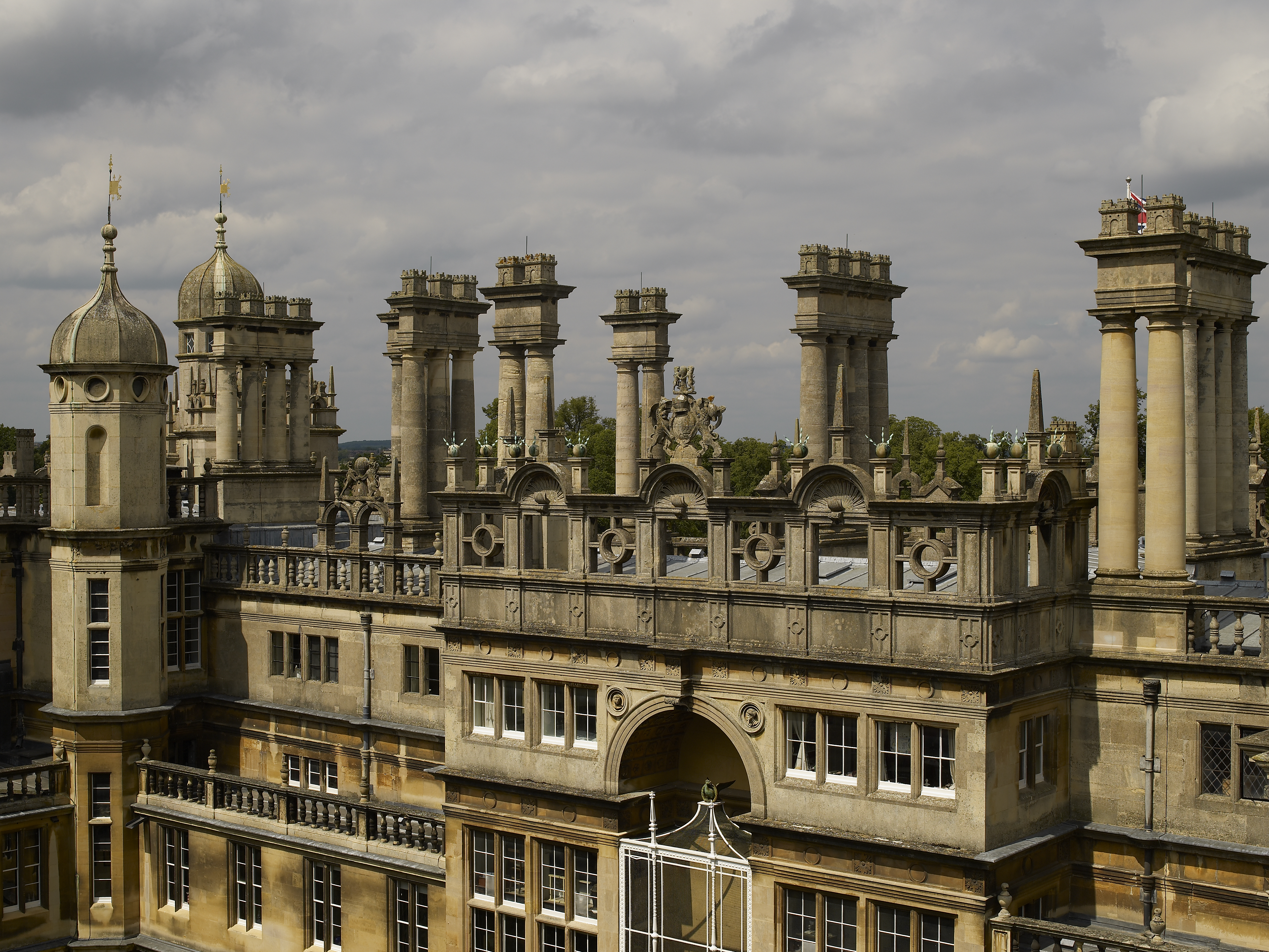 All fired up: 12 of our favourite chimneys, from grand architectural statements to modest brick stacks, as seen in Country Life
All fired up: 12 of our favourite chimneys, from grand architectural statements to modest brick stacks, as seen in Country LifeNothing says winter like a roaring fire, and plenty of the houses that we've photographed for the magazine's architectural places have fireplaces and chimneys worth boasting about.
-
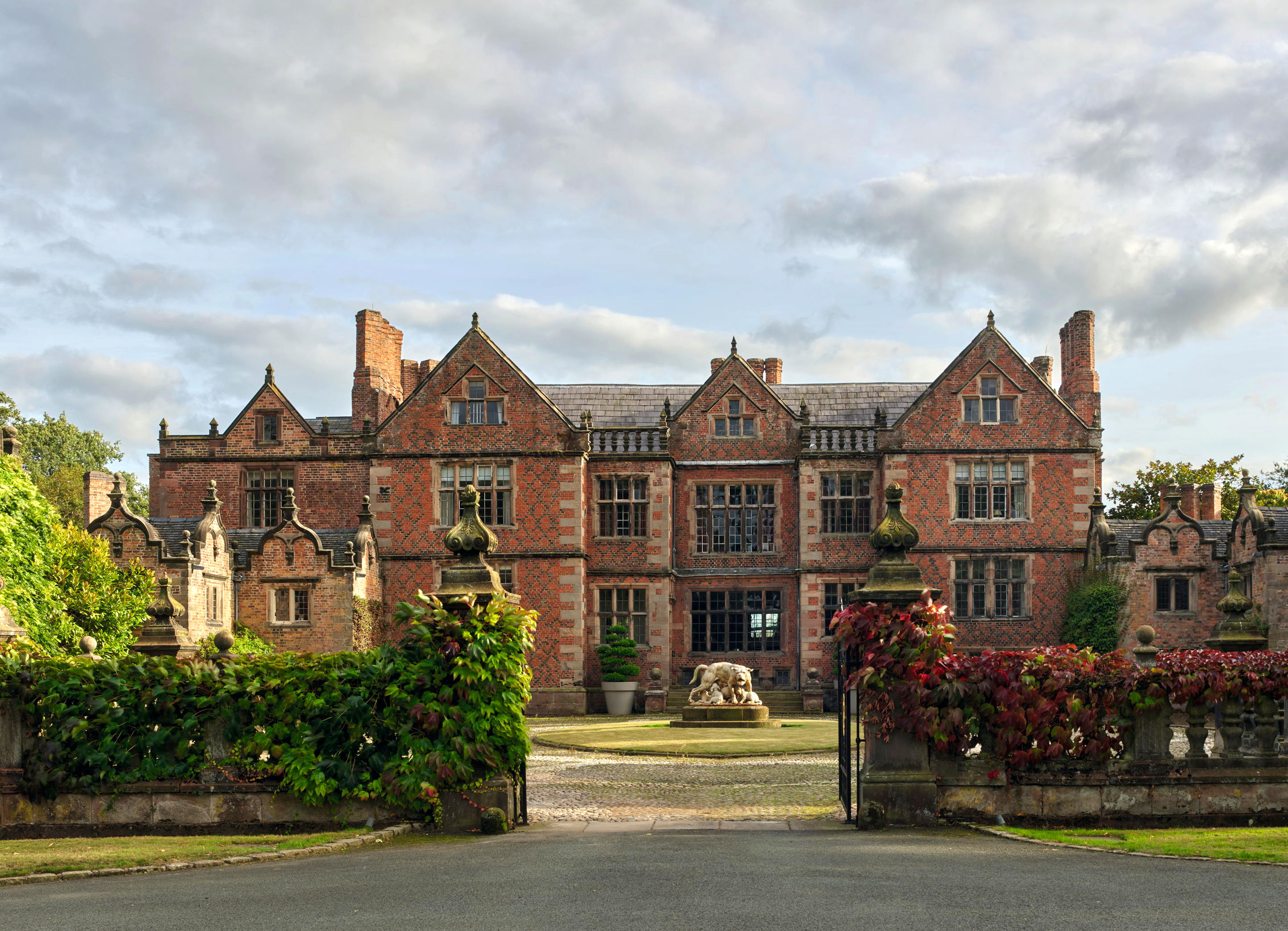 Dorfold Hall: The 'most neat and beautiful house of brick' that owes its existence to a desperate effort to secure succession
Dorfold Hall: The 'most neat and beautiful house of brick' that owes its existence to a desperate effort to secure successionDorfold Hall in Cheshire is an outstanding Jacobean house, but was an unexpected product of dynastic disappointment. John Goodall examines the remarkable circumstances of its construction; photographs by Paul Highnam for Country Life.
-
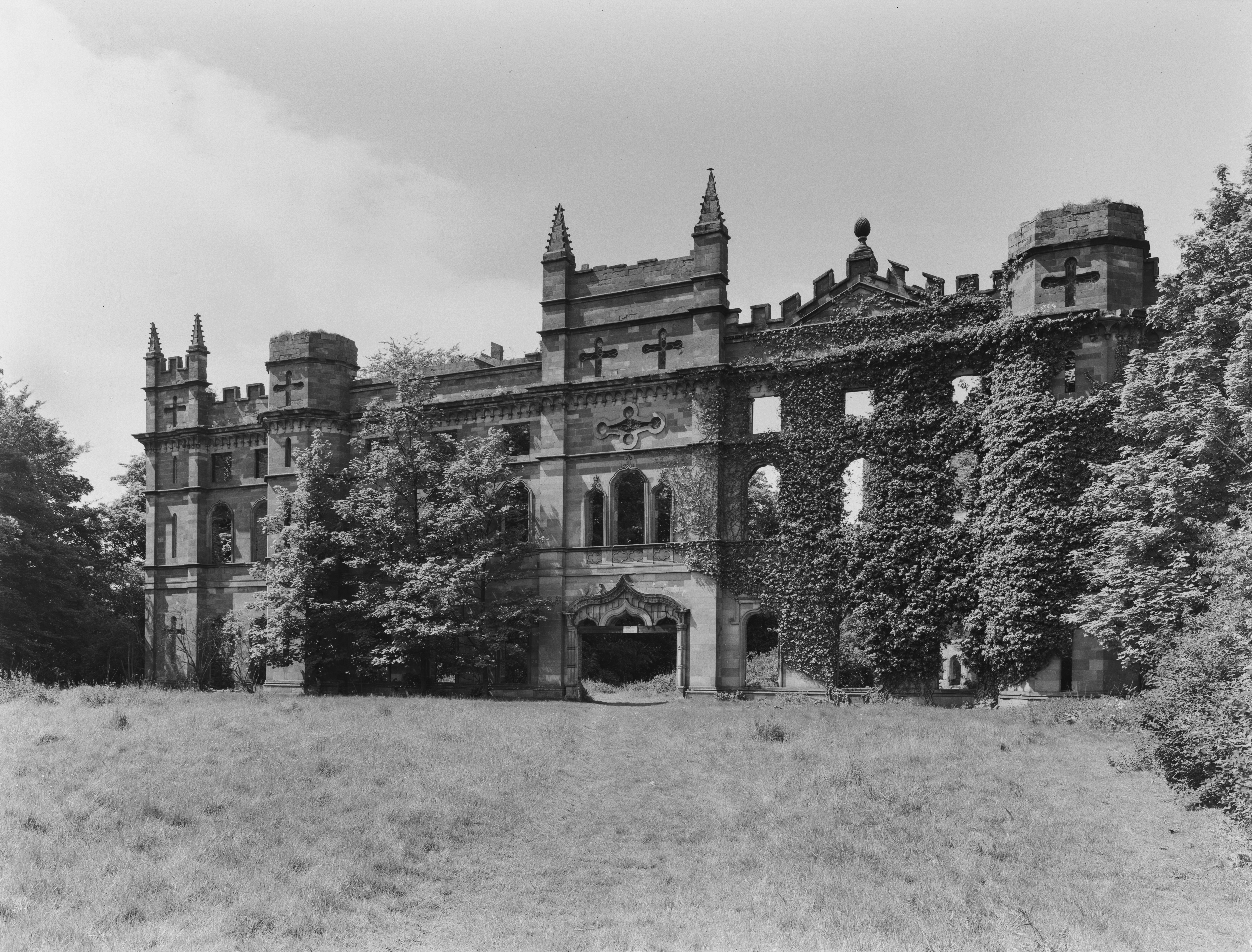 Only a handful of Britain's great houses were photographed by Country Life in a ruinous state. This once splendid Gothic castle is one of them
Only a handful of Britain's great houses were photographed by Country Life in a ruinous state. This once splendid Gothic castle is one of themThis is the tragic tale of Tong Castle, a once great Georgian-Gothic castle that was eventually consumed by Nature.
-
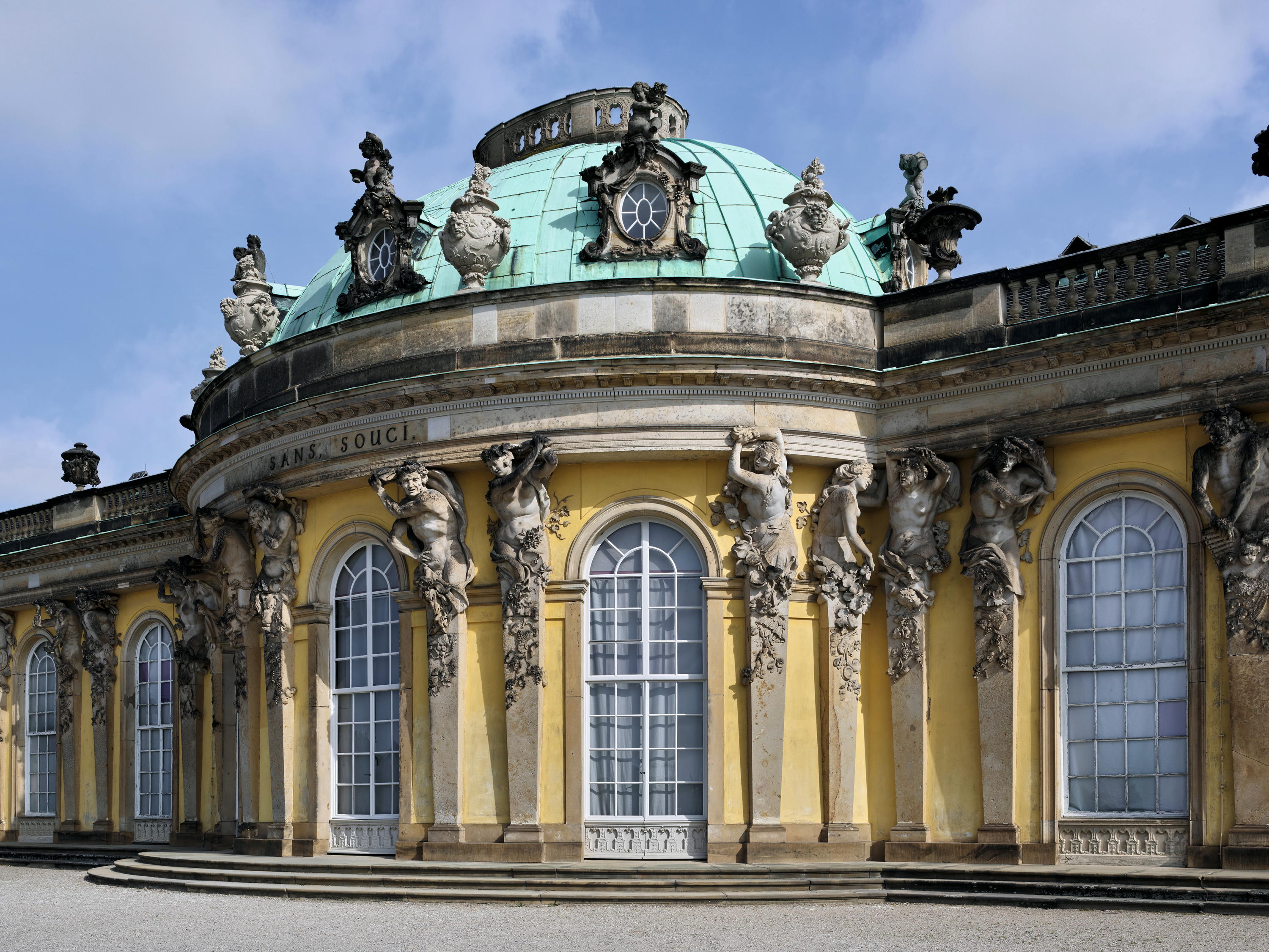 The Rococo jewel nestled into vineyard terraces that's a visual index of 'a king’s Enlightenment belief in knowledge, cultivation and the civilising power of Nature'
The Rococo jewel nestled into vineyard terraces that's a visual index of 'a king’s Enlightenment belief in knowledge, cultivation and the civilising power of Nature'A summer picnic in 1743 prompted Frederick the Great to create a retreat for himself outside his capital at Berlin. The result was the creation of Schloss Sanssouci in Brandenburg, as Aoife Caitríona Lau explains.
-
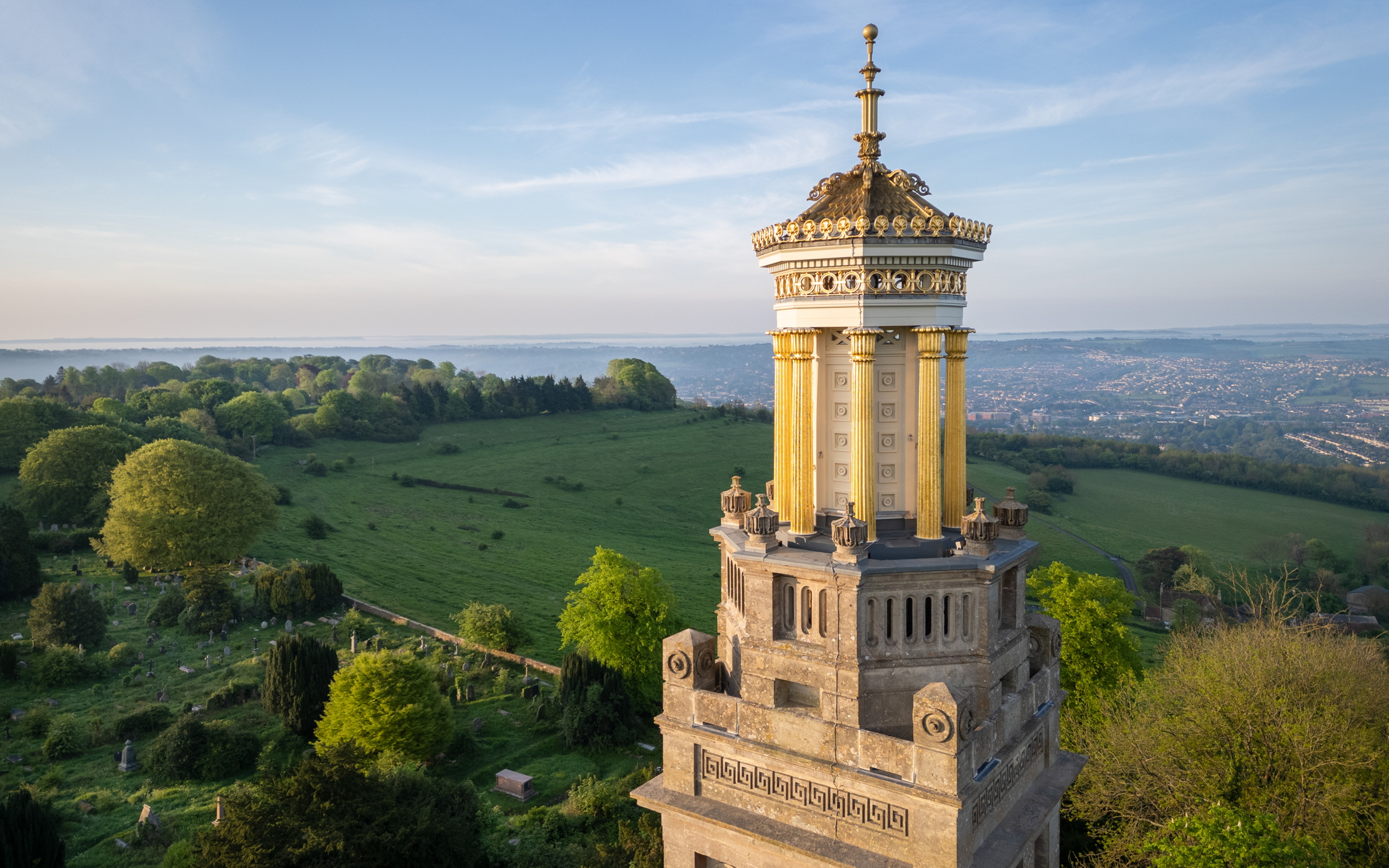 Best in class: This year's Georgian Group Architectural Award winners revealed
Best in class: This year's Georgian Group Architectural Award winners revealedThe Georgian Group’s Architectural Awards, sponsored by Savills, attracted another outstanding crop of entries this year. We reveal the winners, as chosen by a panel of judges chaired by Country Life's Architectural Editor, John Goodall.
-
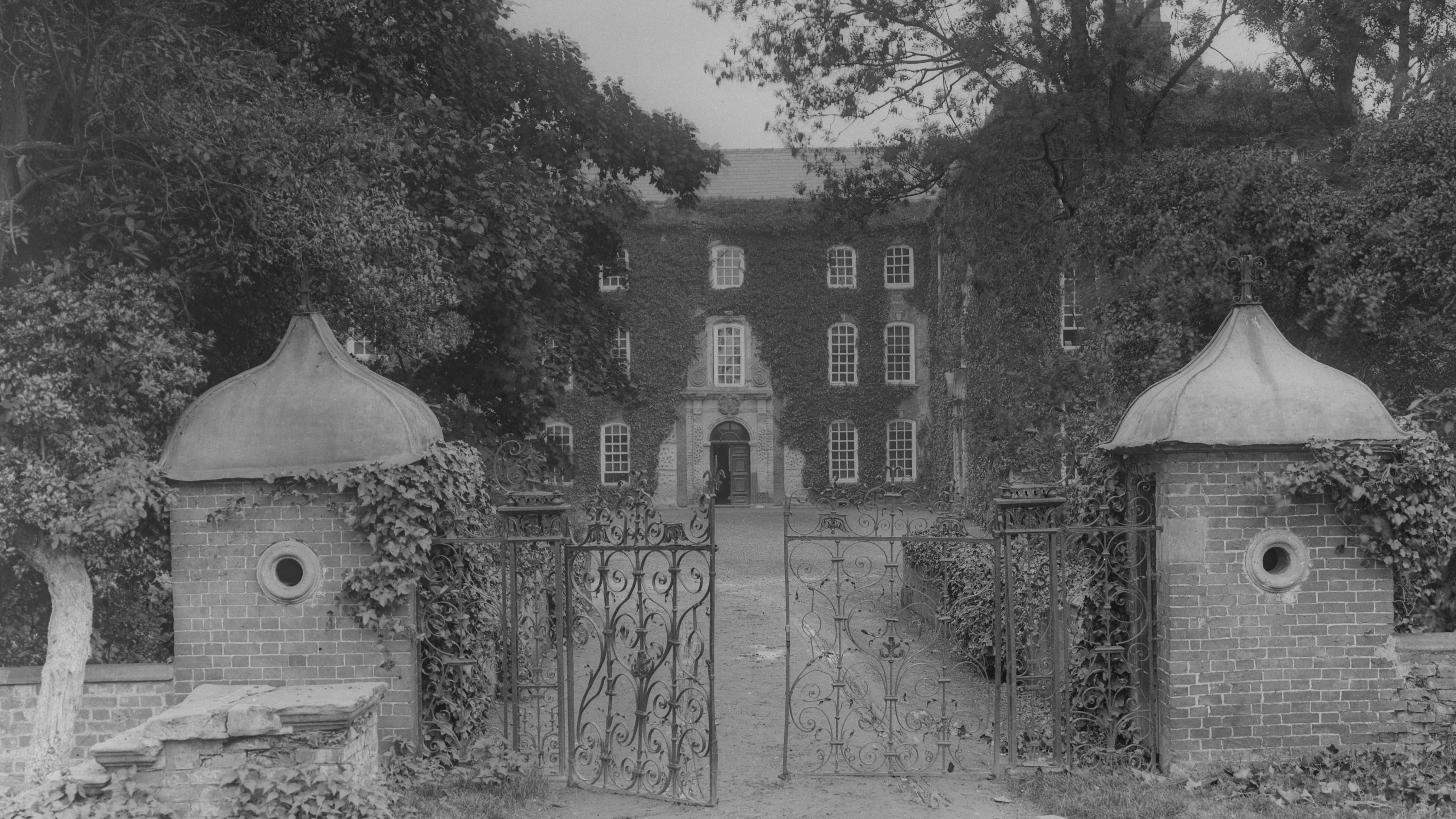 The rise, fall, rise and eventual demolition of a Welsh wonder with an intriguing link to the Duke of Westminster
The rise, fall, rise and eventual demolition of a Welsh wonder with an intriguing link to the Duke of WestminsterMelanie Bryan delves into the Country Life archives and the history of one of Wales’s most extraordinary manor houses.
-
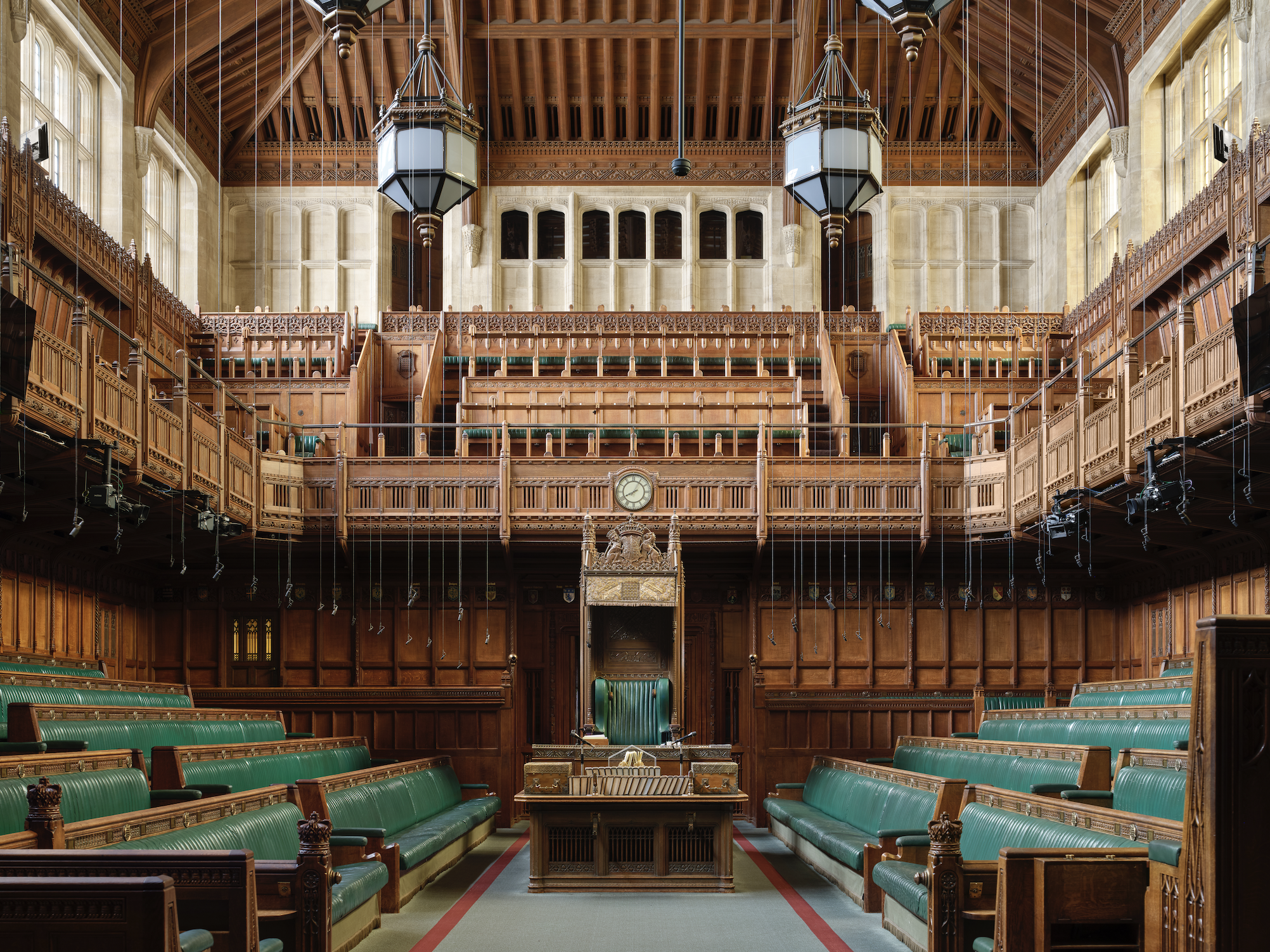 Exclusive: The House of Commons as you've never seen it before, 75 years on from reopening following its destruction during the Blitz
Exclusive: The House of Commons as you've never seen it before, 75 years on from reopening following its destruction during the BlitzThis year marks the 75th anniversary of the reopening of the House of Commons following the destruction of its predecessor in 1941 during the Blitz. John Goodall reports; photographs by Will Pryce.
-
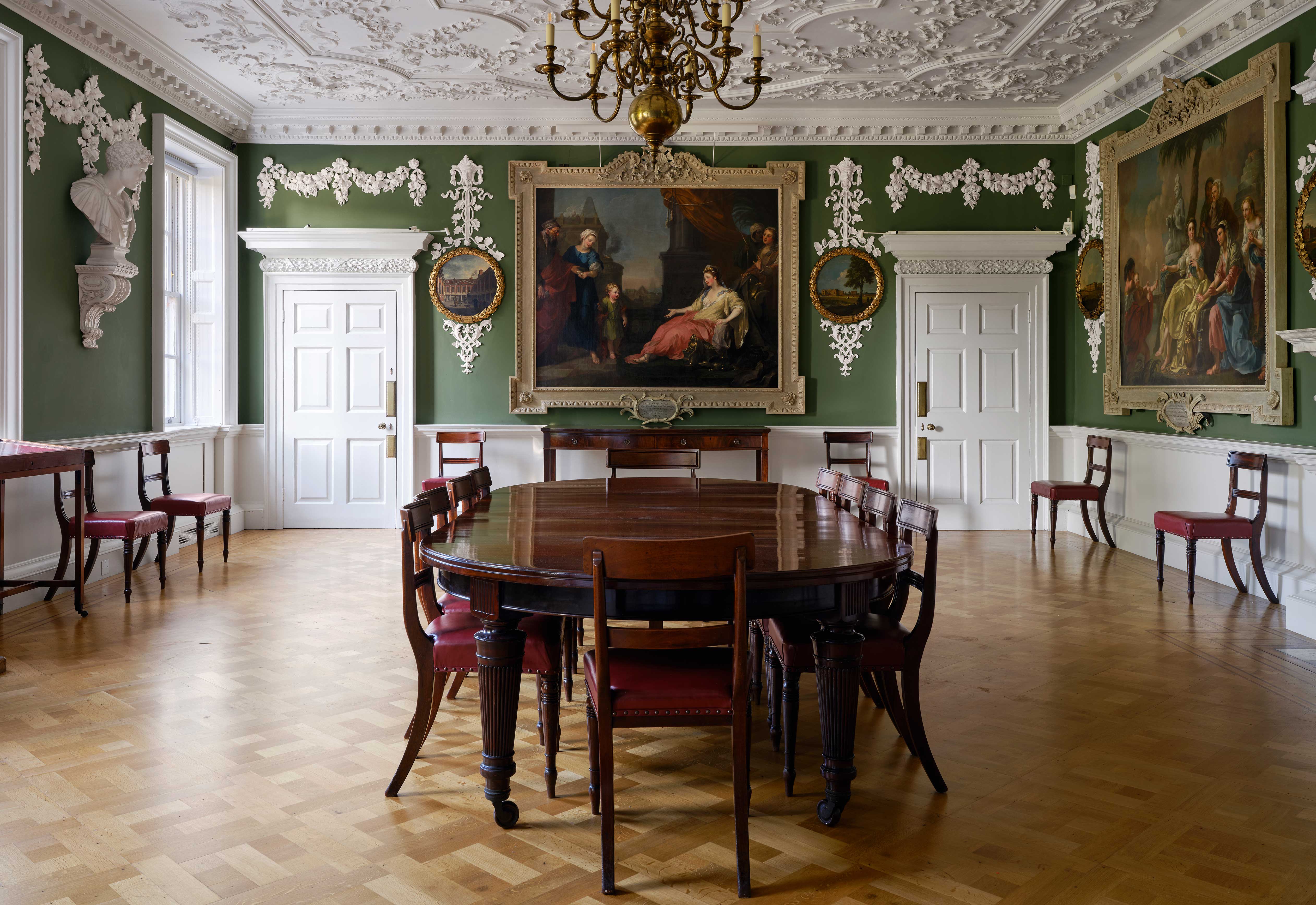 'A bluff, honest man in the trappings of greatness': The extraordinary story of the Foundling Hospital, and the sailor who saved the abandoned children of London
'A bluff, honest man in the trappings of greatness': The extraordinary story of the Foundling Hospital, and the sailor who saved the abandoned children of LondonA remarkable charitable endeavour to save abandoned children on the streets of London has a touching legacy in the form of the The Foundling Museum in the very centre of London. John Goodall tells its story; photographs by Will Pryce.
